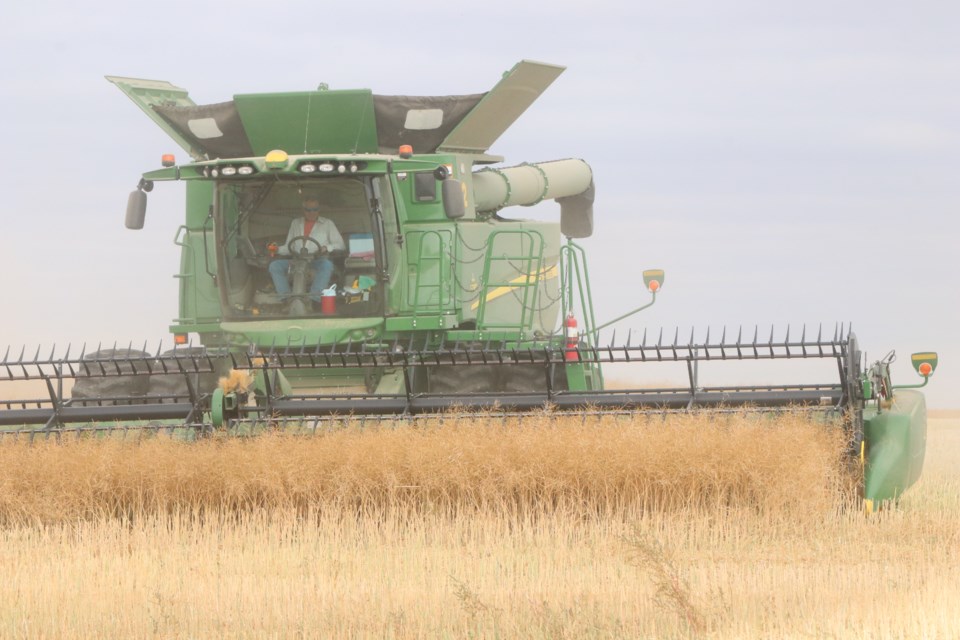REGINA — Harvest is in full swing for much of Southwest Saskatchewan. Any rainfall received likely won’t benefit crops now but will help pasture conditions. Producers are hoping for a wet fall to replenish soil moisture.
The Southwest leads Saskatchewan in harvest progress as 16 per cent of crops have been harvested, which is well above the six-per cent provincial average. Harvest progress this year is also above the 10 per cent five-year average and 10 per cent 10-year average for this region.
Fall seeded cereals lead the way for harvest progress as winter wheat harvest is 100 per cent complete and fall rye harvest is wrapping up with 93 per cent complete. Around half of field pea and lentil crops are off as 57 per cent of field peas and 45 per cent of lentils have been combined. Triticale crops are now 33 per cent harvested which leads spring-seeded cereal crops. Barely is close behind with 25 per cent of acres harvested. Harvest of other spring cereals are just getting started as only six per cent of oats, three per cent of spring wheat and one per cent of durum have been harvested. Like the rest of the province, most oilseed crops aren’t ready for harvest in the southwest as only two per cent of canola and one per cent of mustard have been harvested.
Little rainfall occurred during this reporting period, but there were a few pockets of precipitation. The highest rainfall was in the Richmound-area which received 25 mm of rain. The Dollard area received the second highest rainfall with 17 mm. Overall, the lack of rainfall in much of the southwest has negatively affected topsoil moisture. Cropland topsoil moisture this week is rated as eight per cent adequate, 48 per cent short and 44 per cent very short. Hayland topsoil moisture is 4 per cent adequate, 47 percent short, and 49 per cent very short. Pasture topsoil moisture is a mere 3 per cent adequate, 45 per cent short and 52 per cent very short.
Despite the dry conditions, only 18 per cent of livestock producers have water security concerns for their livestock, while 82 per cent of producers are not currently concerned. Five per cent of livestock water sources are severely short, 27 per cent have moderate shortages, 36 per cent are anticipated to have shortages in the next two months and 32 per cent are not expected to have shortage concerns in the future. Livestock producers in the southwest would like to see lots of rain this fall to help improve water sources that are experiencing shortages.
Heat and limited moisture have been the largest factors causing crop damage this week. Aphids and grasshoppers have also been damaging crops recently. Finally, producers reported some minor wind damage to their crops during this period.
For more information about Southwestern Saskatchewan, explore the .




